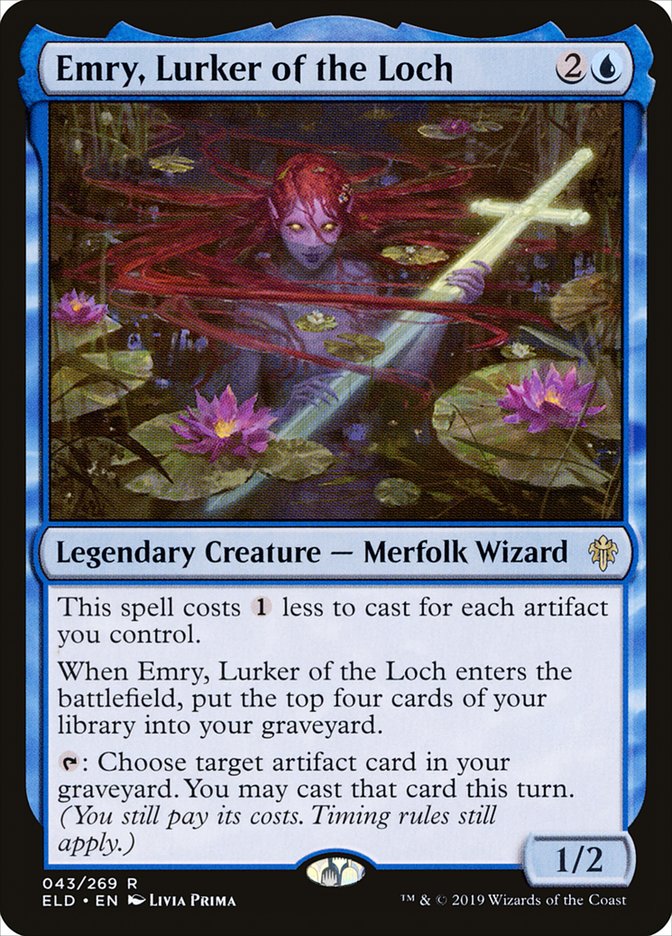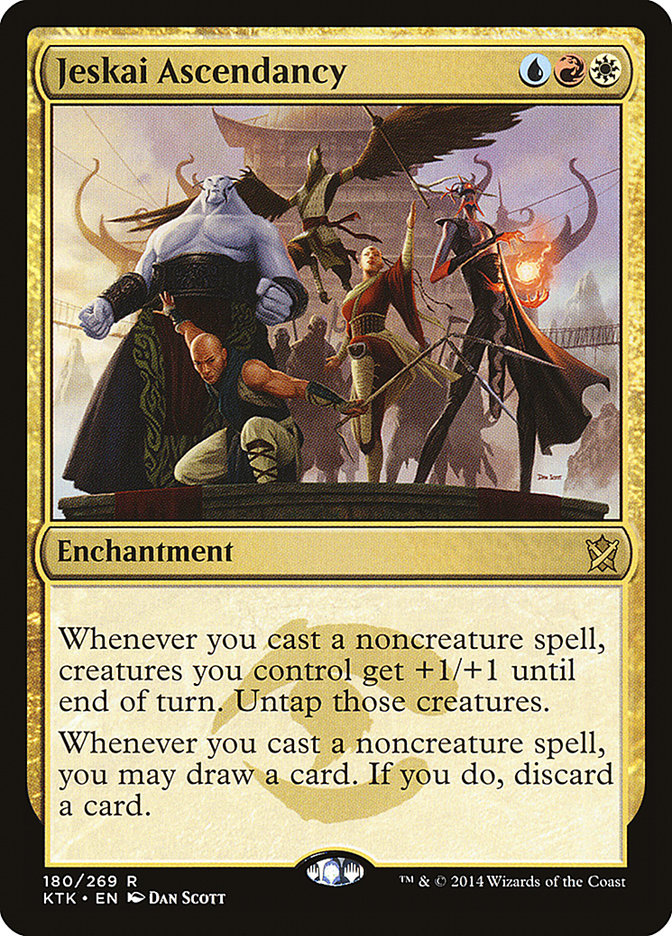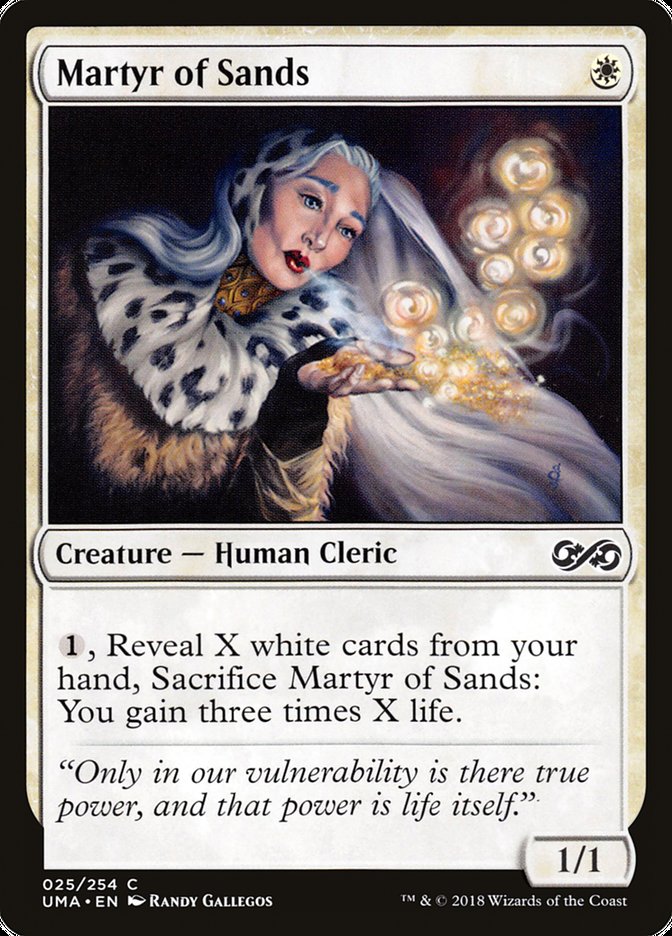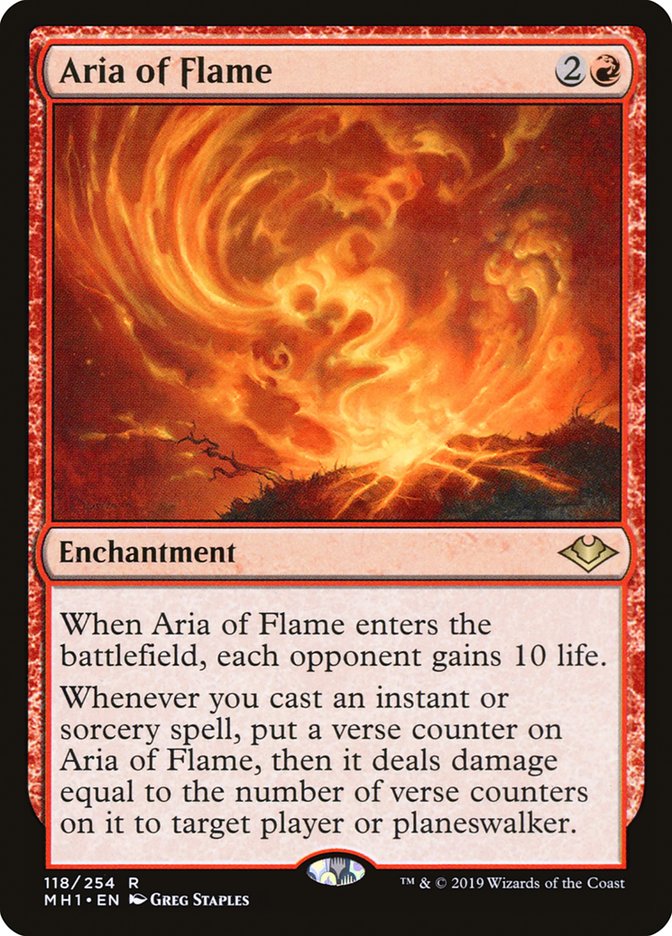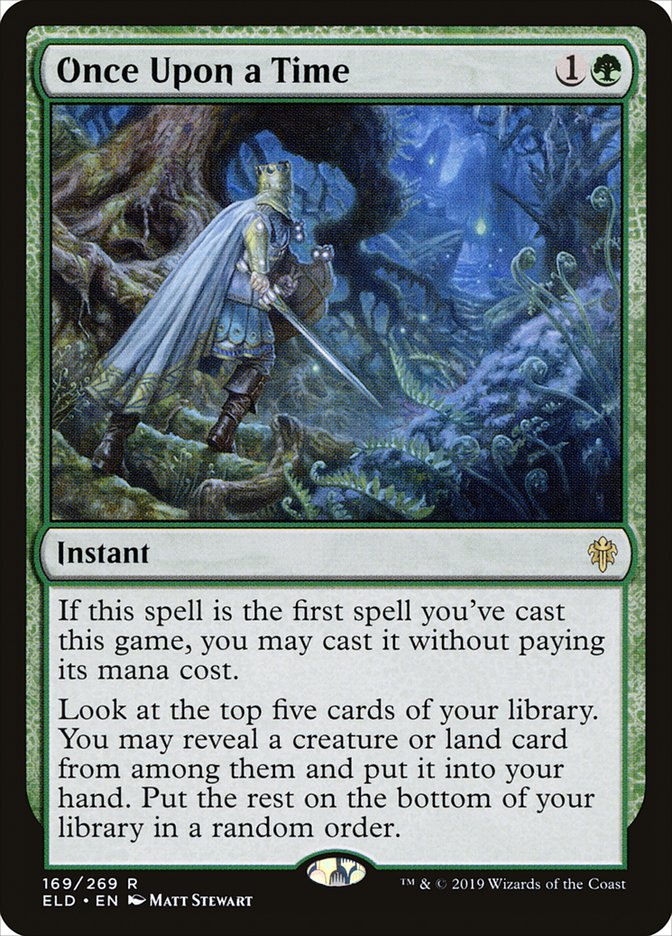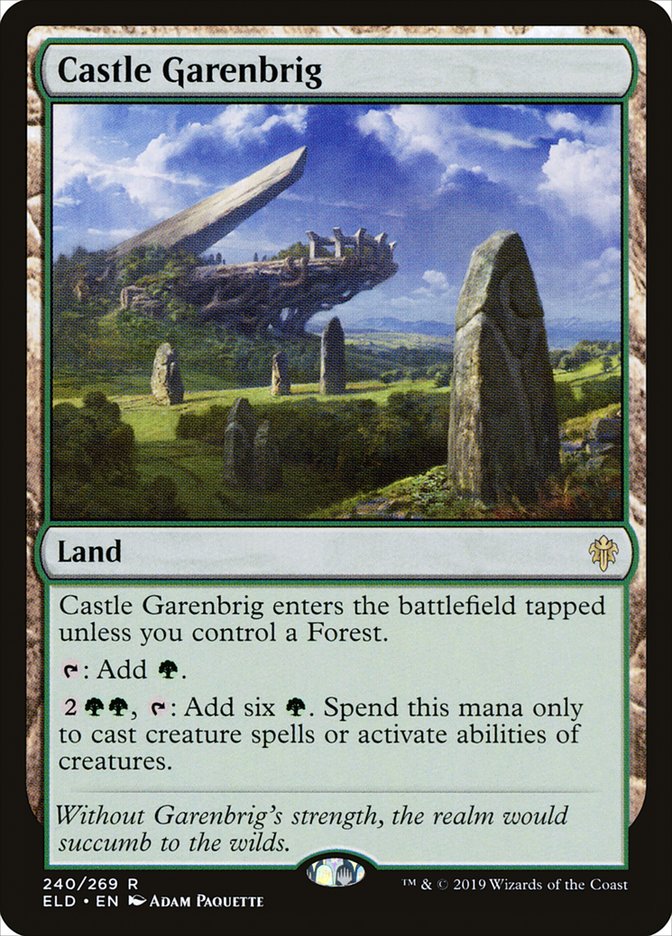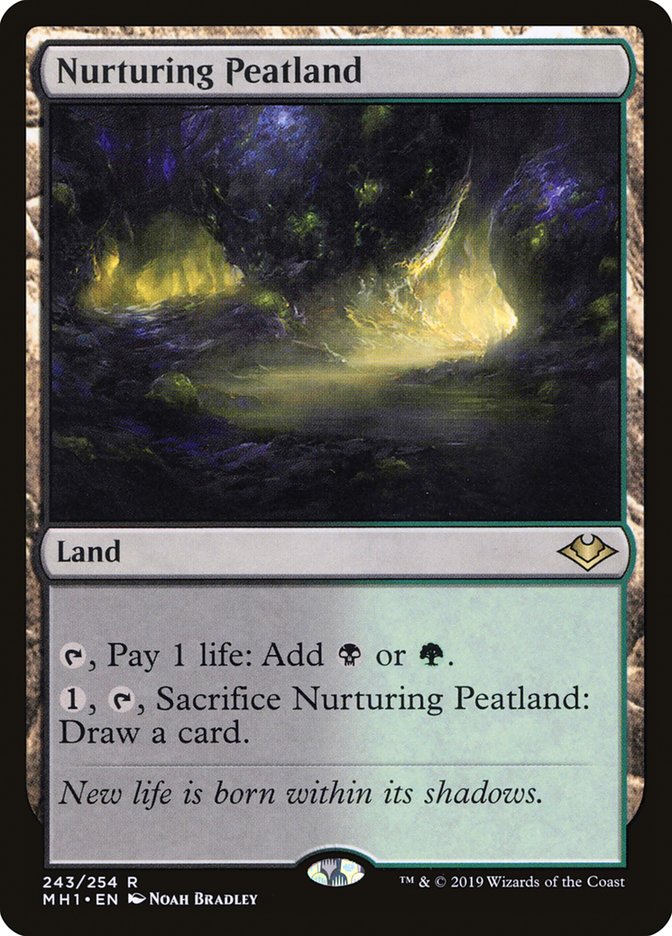I picked a bad time to bomb consecutive tournaments.
With the Players’ Championship race heating up, several of the players in contention made huge strides over the last two weeks, almost completely evaporating the cushion I enjoyed after my semifinal finish in Dallas. There are only three major events remaining in Season 2, and unless I turn something around quickly, I could find myself on the outside looking in come December.
So naturally, I’m taking some time to review the last two weekends and make sure I don’t repeat the same mistakes. There was certainly some variance at play, with some poor draws and bad matchups, but in my experience, if you look hard enough and are honest with yourself, you’ll find areas in which you can improve.
After looking over the last two weekends, there’s a common thread running through them – I made some risky deck choices. I went into both weekends with an eye toward beating Urza, Lord High Artificer decks and big mana, notably Mono-Green Tron and Amulet Titan.
For Philadelphia, I went with a deck of my own creation, Emry Ascendancy:
Creatures (8)
Planeswalkers (2)
Lands (17)
Spells (33)

The idea behind the list was to race the Urza and big mana decks I was targeting since they don’t have much in the way of interaction. In testing I had been surprised at the deck’s resilience given the linear gameplan and reliance on Jeskai Ascendancy, though a deck like Jund with its combination of discard spells and removal that’s effective against both Emry, Lurker of the Loch and Jeskai Ascendancy would be tough.
One matchup I knew would be tough is Burn, hence the heavy suite of removal spells in the sideboard to answer Eidolon of the Great Revel as well as Timely Reinforcements, which can serve as an alternate win condition with Jeskai Ascendancy.
Unfortunately, I ran into Burn twice in the four rounds we played as well as Mono-Red Prowess, which was a tough slate of matchups. But Burn is one of the most popular decks in Modern right now and continues to perform well, so my narrow focus on Urza and Primeval Titan left a Goblin Guide-sized blind spot in my evaluation of the format. Part of me expected Burn to drop out after its strong showing in Dallas, given the incoming hate, but those Urza and big mana decks I was targeting suppressed a lot of the fair decks that would bring such hate, leaving Burn surprisingly well-positioned.
And ultimately, the deck proved too inconsistent due to its reliance on Jeskai Ascendancy. There were too many games where I flailed around doing nothing while digging for the card, and simply didn’t find it in time. I think the Kethis Combo deck Collins Mullen played last weekend is doing very similar things as Emry Ascendancy, but has an extra layer of redundancy with Unearth that raises its consistency a notch.
Creatures (13)
Planeswalkers (2)
Lands (19)
Spells (26)

So I went back to the drawing board for last weekend’s Modern Open in Indianapolis, once again trying to find a deck that was well-positioned against Urza and big mana decks. I came out with Izzet Delver:
Creatures (13)
Lands (20)
Spells (27)

Delver of Secrets has a long history in Modern, starting with some early success in a Jeskai shell featuring Steppe Lynx and Geist of Saint Traft but quickly fading into the fringes of the format. The quality of removal around in Modern and the lack of counterspells on the level of Force of Will and Daze have left the card in a bad position, but I saw Force of Negation as turning that around.
Once you untap with an Insectile Aberration or Young Pyromancer, it’s not too difficult to keep it protected long enough to take over the game, but that first hurdle is the hardest. In long games you have Archmage’s Charm and Snapcaster Mage to win an attrition fight, and there’s enough removal to check Emry, Goblin Guide, and Stoneforge Mystic.
But another stretch of poor matchups, including Jund, Mono-Red Prowess (Lava Dart is a beating), and Raja Sulaiman’s Four-Color Snowheeli deck, and I found myself out of the tournament on Saturday once again. I played thirteen rounds of Magic in the last two Opens, and did not play against the cards Urza, Lord High Artificer; Primeval Titan; or Karn Liberated a single time.
I did however play four Burn and two Mono-Red Prowess decks, so next week I’m bringing Mono-White Martyr.
Okay, I’m not going to be that results-oriented, but it’s important to keep in mind just how variable a Modern tournament can be. The decks I targeted were around and they performed well, but it’s not like Standard where you can expect to play against the top decks multiple times in a tournament. In Modern you have to expect the unexpected.
That can be a daunting task, but there are ways to ensure you’re better-prepared for the natural variability in the Modern metagame, and I failed to do so over the last two weekends. The key is to never stray too far from the powerful, proactive, consistent decks that form the core of the format. The reason those decks show up every week is because they regularly overpower the Tier 2 strategies, even if the matchup looks poor on paper.
When you play a deck like Izzet Delver, you resign yourself to having no free wins. You have to work hard for every game and the margin for error is slim. I still think Izzet Delver is a solid deck, but I needed to put more work into it to ensure my sideboard was great and I had a good plan in a wide array of matchups. And even with that work, there’s no guarantee the deck has what it takes to consistently compete with the wide Modern metagame. It’s fundamentally lacking in the power department.
Meanwhile, Emry Ascendancy was lacking in the consistency department. That’s why I liked the Kethis Combo deck, since Unearth helps mitigate that problem. There was a fatal flaw in both decks that I overlooked in order to gain a perceived advantage in metagame positioning that, due to the variable nature of Modern, I never had an opportunity to realize.
In Standard you can sacrifice power, consistency, or even proactivity for an improved metagame position because it’s more reliable that you will realize that advantage, but in Modern you should be more restrictive in your deck selection, starting from the pool of decks that have the combination of those three attributes and selecting the one that is best-positioned among them. That’s the process that led to me playing TitanShift in Dallas, a deck that has plenty of free wins and that can impose its will on the opponent, even in a bad matchup.
For an example of this process in action, look no further than last week’s champion, Drake Sasser and Gifts Storm.
Creatures (8)
Lands (18)
Spells (34)
- 2 Sleight of Hand
- 4 Serum Visions
- 4 Gifts Ungiven
- 4 Desperate Ritual
- 3 Merchant Scroll
- 1 Echoing Truth
- 2 Opt
- 2 Remand
- 2 Grapeshot
- 4 Manamorphose
- 4 Pyretic Ritual
- 2 Past in Flames
Sideboard

On paper, Gifts Storm’s position in Modern looks very similar to the decks I played. It should be favored against big mana and Urza decks, since those don’t interact well with the combo, and it’s weak to Burn. But Gifts Storm is a fundamentally more powerful deck, a proven commodity that before Humans emerged was in the conversation for the best deck in the format.
Well, Humans has largely disappeared, and with Faithless Looting gone, there’s also much less graveyard hate. Outside of Burn, the matchups I’m worried most about are Death’s Shadow variants, and Drake made sure to come prepared for those with the full playset of Aria of Flame in the sideboard, a haymaker of a card that also serves as an excellent alternate win condition.
There was still some risk with Drake’s choice, and a parade of Goblin Guides could’ve led to an early exit, but Gifts Storm was worth the gamble, while my choices weren’t ready yet.
We talk a lot about variance in Magic, and one of the skills separating good players from great ones is their ability to manage that variance at all levels, from constructing manabases to deck selection. It’s true that the best players seem to get lucky a lot, but that’s only because they are more often putting themselves in that position, whether by finding the line that gives them one extra draw step towards a key card or finding the overlooked deck on a given weekend.
If you always just play the default best deck, you’ll never have the element of surprise on your side. But if you always go rogue, then you’ll have a lot of flame-outs. It’s a difficult balance to strike, and certainly no one is perfect, but it’s a skill you can work to develop, just like in-game tactics.
Keeping this lesson in mind, here are the decks I’m looking at closely for Regionals this weekend:
Amulet Titan
Creatures (13)
Lands (27)
Spells (20)

This is my pick for best deck in the format right now. Once Upon a Time and Castle Garenbrig raised the deck’s speed and consistency to levels we haven’t seen since the days of Summer Bloom and Field of the Dead is a powerful enough alternate win condition that you’re not completely reliant on resolving a Primeval Titan.
Amulet Titan has always been strong in the big mana mirrors because it’s a little bit faster, and that speed should also give it an edge against Outcome decks. But unlike some of the other decks that are advantaged there, Amulet Titan also holds its own against Burn. If I run this deck I’ll need to get a lot of reps in, but its puzzle-heavy style plays to my strengths and I’ve tested the deck before, so I’m not coming in cold.
I’ve also noticed an uptick in graveyard decks, taking advantage of the decline in hate following the Faithless Looting ban. Dredge is still popping up, and CrabVine won a recent PTQ at MagicFest Utrecht. The maindeck Bojuka Bog has always been a great tool for Amulet Titan in these matchups, and other decks adding more copies of Rest in Peace and Relic of Progenitus could mean less sideboard space to prepare for Primeval Titan.
With its recent success we could see an uptick in Blood Moons, but Amulet Titan has succeeded against that card before. And until I see the metagame respect Amulet Titan in a big way, it will remain a strong choice.
Jund Death’s Shadow
Creatures (13)
Planeswalkers (1)
Lands (18)
Spells (28)

As far as disruption goes, the heavy discard package looks quite good right now. Urza Outcome decks are reliant on a pretty high base of resources, and either cutting them off from that base or stripping the powerful four-drops can leave that deck looking rather anemic. Also, access to Assassin’s Trophy and Abrupt Decay can help check Oko, Thief of Crowns, which is becoming a popular sideboard card against disruption-heavy decks.
A common thread among the decks I’m interested in is significant new additions. Jund Death’s Shadow got Nurturing Peatland, which is great at both mitigating flood and helping Death’s Shadow dominate the battlefield. Hobbs was reportedly not happy with Once Upon a Time, so that might be a miss, but Manamorphose serves nicely in that slot and could even enable the deck to sideboard Blood Moon against Amulet Titan.
The Burn matchup can be scary here, but Inquisition of Kozilek into Tarmogoyf is a great opening in that matchup, and you have plenty of cheap removal for their creatures alongside a great sideboard card in Collective Brutality.
Most importantly, discard spells and a fast clock can beat anyone in the room. Death’s Shadow once dominated Modern to the point where it garnered ban discussions, but like Gifts Storm, Humans was a big blow to its metagame position, so with its largest predator on the decline, Death’s Shadow is coming back out to play.
I’ve been taking a lot of home run swings recently, and it’s time to get back to solid deck selection and good tuning. The Players’ Championship race is coming down to the wire, and next month’s Invitational at SCG CON Winter is going to be a stressful event. I need to regain my comfort level in Modern so I can spend time catching up in Standard, so I’m going to be a little safer. A couple of solid hits and maybe a double-bagger, and I’ll likely extend my season to December.


